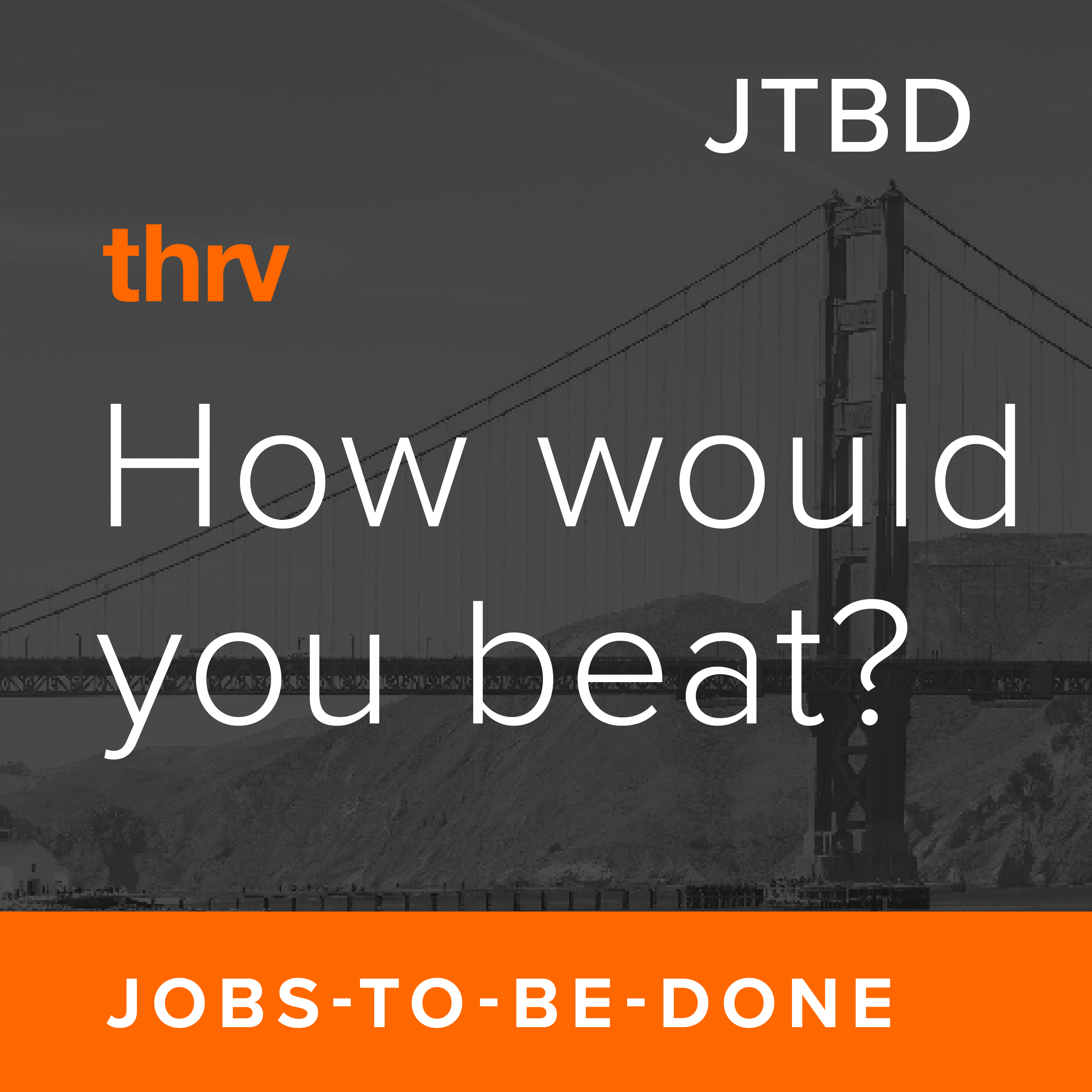
The wonderfully thoughtful Peter Merholz, started a valuable discussion on Twitter: What is UX Design? Specifically, he noted that “No one, NO ONE has been able to articulate a meaningful description or definition of “UX Design”. I thought I would contribute to this discussion, so I replied that “UX Design is the process of determining the steps required for a customer to get a job (#jtbd) done. Fewer steps is better, zero (automatic) is best. Speed and accuracy of getting the job done are the criteria to judge the design.”
I wanted to post a longer explanation here (given twitter’s limitations) in order to clarify what I meant and hopefully provide some useful insights for UX designers and product teams.
UX is obviously incredibly important because good UX contributes to customer satisfaction and customer satisfaction drives equity value. The number one goal of every product, marketing and sales team is to create equity value. Teams that don’t create equity value ultimately get fired and companies that don’t create equity value go out of business.
So what is UX Design?
First, let’s distinguish between two different types of customer experience: non-immersive and immersive. In this post, I will be focusing on non-immersive examples.
Immersive experiences are where a user wants to use the product over a period of time. For example, playing video games, watching television or listening to music. In these cases, the user is looking to use the product in-and-of-itself (video games, tv shows, songs). They want to spend time with it.
In non-immersive experiences, which I will focus on here, the user wants the experience to be over with as quickly as possible. For example, getting to a destination on time, optimizing health with diabetes, acquiring customers, and finding tv shows to watch are all goals that people (customers) have. But people don’t want to spend a significant amount of their valuable time doing any of these things. They want to achieve the goal as quickly as possible and get back to their lives.
A quick logical test proves that this is true. Let’s say you designed a product (and user experience) to make getting to a destination on time slower or a product that made finding a tv show to watch slower. Would your product succeed against the competition? The answer, of course, is no, not likely.
This is also true for accuracy: your customers want to achieve their goal as accurately as possible. For example, let’s say your product was less accurate at getting people to a destination because it didn’t always get the address of the destination correct (as happened with the first version of Apple Maps). Would your customers be satisfied with the product? Again, the answer, is no, not likely.
Your customer’s goal is an example of what is now known as a “job-to-be-done” or JTBD. But for the sake of this discussion, let’s put JTBD and its terminology to the side for now.
The key concept is that your customers have a goal that is independent of your product or its interface. Regardless of what we call this concept (JTBD or otherwise), it explains why companies fail better than any explanation I have ever seen in the 30 years of my career. For example, Kodak thought they were in the “film” market, but “film” is a product. Blackberry thought they were in the “keyboard device” market, but a keyboard device is a product. Britannica thought they were in the “encyclopedia” market, but again, a printed encyclopedia is a product, not a goal. You can test this concept for any historical example and it holds true: customers do not want your product, they want to achieve their goal. This was famously summarized by Theodore Levitt: “customers don’t want a quarter-inch drill, they want a quarter-inch hole.”For non-immersive experiences, there are a few key principles:
- Your customers have a goal to achieve that is independent of your product.
- Your customers want to achieve their goal as fast as possible.
- Your customers want to achieve their goal as accurately as possible.
In addition to these principles, it is also true that every customer goal is complex. This is because to achieve any goal, customers have to take actions and identify variables required to achieve the goal. For example, if you are going to get to a destination on time, you have to know a lot of information (i.e. variables): what are the possible routes, what is the required departure time, what are the traffic conditions on the routes, what is the total travel time, etc. And you have to take actions including making decisions: e.g. determine the departure time, determine the optimal route given the traffic conditions, determine the arrival time for a route, etc. A product that helps customers take actions and make decisions quicker than competitors and that helps identify variables more accurately than competitors will win in the market by helping customers achieve the goal faster and more accurately. This is a key concept, and it is why any user experience (in non-immersive markets) should be focused on speeding up the steps it takes a user to achieve the goal. Your users don’t want to use your product, they want to achieve their goal. So a UX with fewer steps is the best experience.Hopefully this helps clarify why we view UX Design to be the process of determining the steps required for a customer to achieve a goal (i.e. get a job done). Fewer steps is better, zero (automatic) is best. And hopefully it clarifies, why speed and accuracy of achieving the goal are the criteria to judge the design.I hope this is just the beginning of a conversation about UX Design, and I welcome any feedback and refinements that would help UX and product teams create more equity value for their companies.






